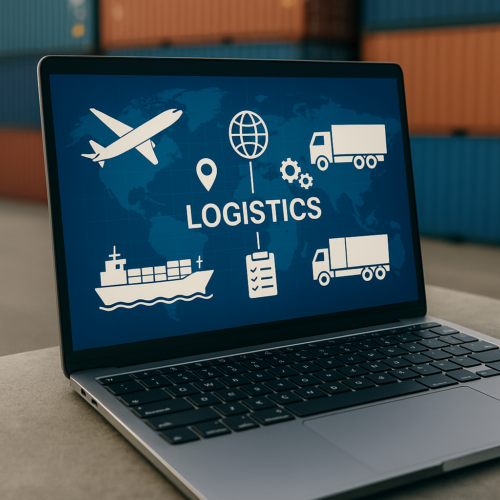The freight dispatching industry plays a pivotal role in the $800 billion U.S. freight market, connecting shippers with carriers to ensure goods move seamlessly across the country. As e-commerce continues to surge and supply chain demands grow more complex, freight dispatchers must scale their operations to stay competitive and capitalize on growth opportunities. Scaling effectively requires strategic planning, technology adoption, and a focus on relationships. In this guide, we’ll explore five key strategies to help freight dispatching companies expand successfully in 2025.
The Importance of Scaling in Freight Dispatching
Freight dispatching is a fast-paced industry where efficiency, reliability, and adaptability are critical. Scaling operations enables dispatchers to handle larger load volumes, attract new clients, and increase profitability. By scaling strategically, businesses can enhance service quality, strengthen carrier partnerships, and position themselves for long-term success in a dynamic market.
Here’s how freight dispatchers can scale their operations effectively.
5 Strategies for Scaling Freight Dispatching Operations
1. Leverage Technology for Streamlined Operations
Technology is the cornerstone of a scalable freight dispatching business. Transportation Management Systems (TMS) like DAT One or Truckstop.com automate time-consuming tasks such as load matching, tracking, and invoicing. These platforms enable dispatchers to process higher load volumes with fewer errors. For instance, a TMS can match carriers to loads in seconds, boosting efficiency. Cloud-based tools also facilitate real-time collaboration, ensuring your team can manage growth seamlessly.
Key Insight: A robust TMS reduces manual work, allowing dispatchers to handle more loads with fewer resources.
2. Expand and Diversify Your Carrier Network
A strong carrier network is essential for scaling. Actively recruit owner-operators, small fleets, and large carriers through load boards, industry events, or referrals. Diversifying your network to include various equipment types—refrigerated, flatbed, or dry van—ensures you can meet diverse client needs. Build trust by offering consistent loads and prompt payments, which encourages carriers to prioritize your business. A larger, reliable carrier pool enables you to take on more clients without compromising service.
Key Insight: A diverse carrier network provides the flexibility and capacity to scale with demand.
3. Implement Standard Operating Procedures (SOPs)
Standard Operating Procedures (SOPs) are critical for maintaining consistency as your business grows. Document workflows for load assignments, carrier communication, and billing to streamline operations. For example, a clear SOP for carrier vetting ensures compliance with FMCSA regulations and prevents delays. Train your team on these procedures to maintain service quality during expansion. Regularly review SOPs to address inefficiencies and adapt to industry changes.
Key Insight: Well-defined SOPs ensure operational consistency, enabling seamless scaling.
4. Build a Skilled, Scalable Team
Scaling requires a team capable of managing increased workloads. Hire dispatchers with industry knowledge and train them on your systems and SOPs. Consider outsourcing non-core tasks, such as accounting or customer support, to maintain focus on dispatching. Use performance metrics, like load completion rates, to monitor efficiency and identify areas for improvement. A well-trained team ensures your business can handle growth while maintaining high service standards.
Key Insight: A capable team is the foundation of sustainable growth in freight dispatching.
5. Focus on Client Retention and Acquisition
Sustainable scaling depends on balancing client retention with new business development. Deliver exceptional service through proactive communication, real-time load tracking, and competitive pricing. Use CRM tools like HubSpot to manage client interactions and identify upsell opportunities. Simultaneously, pursue new clients through targeted marketing efforts, such as LinkedIn campaigns or industry trade shows. Strong client relationships drive repeat business and support long-term growth.
Key Insight: Exceptional service and strategic client acquisition fuel revenue growth.
Overcoming Scaling Challenges
Scaling freight dispatching operations comes with challenges, including managing cash flow, maintaining service quality, and ensuring regulatory compliance. Rapid expansion can strain resources if not carefully planned. To mitigate these risks:
- Invest in scalable tools to handle increased workloads.
- Hire strategically to avoid overextension.
- Maintain robust carrier vetting processes to comply with DOT regulations.
- Provide ongoing training to keep your team and processes up to date.
By addressing these challenges proactively, dispatchers can scale without compromising quality or compliance.
How to Prepare for Scaling
To set your freight dispatching business up for success:
- Invest in Training: Enroll in programs like Freight Dispatcher Training to enhance skills and industry knowledge.
- Adopt Scalable Tools: Implement TMS and CRM platforms to automate and track operations.
- Monitor Cash Flow: Ensure sufficient capital to support hiring, technology, and growth initiatives.
- Stay Industry-Savvy: Keep up with trends like fuel price fluctuations, capacity constraints, and emerging technologies.
The Future of Freight Dispatching
The freight industry is evolving rapidly, with technologies like AI-driven load optimization and predictive analytics set to transform dispatching in 2025. By leveraging technology, expanding carrier networks, optimizing processes, building skilled teams, and prioritizing client relationships, freight dispatchers can position themselves for success in the competitive $800 billion market.
Conclusion
Scaling a freight dispatching company requires a strategic blend of technology, process optimization, and relationship-building. By adopting TMS platforms, diversifying carrier networks, implementing SOPs, building capable teams, and focusing on client satisfaction, dispatchers can handle increased demand while maintaining service excellence. With these strategies, freight dispatching companies can achieve sustainable growth and thrive in the dynamic 2025 freight market.









